|
You may have heard about cleansing and just how good it is for you. So what now? Should you really take time out of your busy schedule to cleanse? And if so, how do you actually do a cleanse? Ayurvedic cleansing is simple and easy and can be done in the comfort of your own home. Use the information below from Banyan Botanicals to start unlocking the vast potential of your health and well-being.
Why to do a Cleanse You may already be taking care of yourself by eating healthy food, doing yoga and exercising. So why do you need to do a cleanse? Because prevention is the name of the game, and even the finest instruments require tuning on a periodic basis. A cleanse based on Ayurvedic principles allows your body the opportunity to rest and rejuvenate, as well as remove toxins that may have accumulated in your system. Most of us have some exposure to unhealthy toxins in our food, water and environment. Poorly digested food can further add to a build-up of toxins, which Ayurveda calls ama. This toxic build-up in the system causes sub- optimal performance of your body’s tissues and organs, right down to the cellular level. Signs that toxic residue has accumulated in your system may include a heavy coating on your tongue, sluggishness after you eat, foggy thinking, and joint and muscle aches. Cleansing starts the clean-up process and leaves you feeling lighter and refreshed. The benefits from doing even the simplest cleanse can be powerful. An Ayurvedic cleanse can help:
There are a variety of ways to cleanse. Ayurveda’s full cleanse is called Panchakarma, which can be done with a trained practitioner. However, a simpler, less involved yet highly effective version of this is to do a whole foods cleanse at home, which is what we describe here. How to do a Cleanse Just a few easy steps form the foundation of your cleansing experience: 1. Mono Diet Kitchari for breakfast, lunch, and dinner. Kitchari is considered a nutritionally whole food. Made from rice and yellow mung dal, this very basic Ayurvedic combination is considered one of the easiest foods to digest, allowing the digestive system to rest and reset while giving your tissues nourishment and sustenance. It is important to have cooked, easy to digest foods during a cleanse because this allows the body to turn its attention from breaking down your food to actually mobilizing and getting rid of toxic build-up. Make your kitchari with digestive spices like turmeric, cumin and ginger, which not only add great flavor, but also kindle the digestive fire and boost the immune system. Add some ghee as internal oleation helps loosen toxins. And finish the recipe with fresh seasonal vegetables of your choice, giving you valuable fiber as well as vitamins and minerals. Learn how to make kitchari with our video at www.banyanbotanicals.com/kitchari Sip hot water and hot detox tea. Hot water kindles the digestion and also helps naturally flush toxins from the system. Sip hot water throughout the day, and also hydrate yourself with plenty of room temperature water if needed, but avoid cold, iced drinks and caffeine. Start and end your day with a cup of an herbal detox tea. If you want, you can make it at home with fresh spices like cumin, coriander, fennel and fresh ginger. Leave at least 5 hours between meals. This affords ample time for digestion and allows the body to remove the toxic stores that have been tucked away in the tissues for long periods of time. For this reason, try to avoid snacking. If you are ravishingly hungry, go ahead and have a snack that incorporates the same ingredients as the kitchari, and eat a larger portion at your next sitting to hold you over between meals. You may find that this gets easier with time. 2. Self Oil-Massage This incredibly nourishing treat for yourself also serves a vital role in the cleansing process. It helps mobilize toxins from the tissues while also calming the nervous system so that the body can move from stress-fighting functions to rejuvenating functions. Only in the parasympathetic rest and relax paradigm can the cells repair themselves, bringing healing to the body and a renewed state of well-being. Using warm oil is key in the massage, as this allows the oil to more deeply penetrate and nourish the tissues. Plus it feels good! video at www.banyanbotanicals.com/sm 3. Triphala The final key for any cleanse is to, well, CLEANSE! A gentle home cleanse does not have to include harsh purgatives. The most important thing is to give the body the opportunity to flush the toxins with regular, healthy bowel movements. Triphala helps gently support this type of cleansing while also being a powerful source of anti-oxidants. It rejuvenates the tissues, leaving you feeling lighter and revitalized. Take 2 tablets at bedtime. Alternately, if you prefer the traditional method of powder, take 1⁄2 tsp at bedtime with warm water, or steep in hot water at bedtime and drink in the morning. Adjust your dose as needed according to your body’s response. When to do a Cleanse Ayurveda traditionally recommends cleansing at natural transition points, such as the change of seasons. As the body shifts gears to adjust to the changes in the environment, a cleanse supports a gentle removal of the build- up from the passing season, allowing the body to more easily adapt to the incoming season. However, a gentle home cleanse can be done at almost any time that suits your schedule, whenever you feel the need to reset your digestion and remove toxicity. Make time to allow yourself to slow down and experience the benefits of the cleanse, rather than maintaining a hectic, stressful daily routine that may have contributed to the toxic build-up in the first place. If you are new to cleansing and just want to give this a try, you can start with a mini one-day cleanse. Even this is enough to give your digestive system a break, boosting the immune system, balancing doshas and removing unwanted residue. If you are ready to really experience the benefits of the home cleanse, commit to a three- to seven-day process, following the same routine on a daily basis. Add some gentle yoga and journaling to deepen your cleansing experience and to gain insight into your healing process. During this time, you may feel ups and downs, but stay with it, and you will definitely experience the uplifting benefits by the end-in body, mind and spirit. Post-Cleanse Once you have finished the cleanse, gently and consciously reintroduce activities into your daily routine, as quickly jumping back into your previous habits will be a shock to the system, rapidly re-building toxins and imbalancing doshas. Take some time to re-introduce other elements back into your normal diet, waiting a few extra days if you can to have heavier foods like dairy and meat. If there are previous habits that you know weren’t serving your health, now is a great time to let them go. And if you found portions of the cleanse beneficial, like the self-massage or Triphala, feel free to incorporate them into your long- term daily routine. The days that follow a cleanse are a great time to start taking rejuvenating herbs and formulas like Ashwagandha and Chyavanprash. They will continue to nourish the system and bolster energy and vitality. Take Ashwagandha before bed (2 tablets or 1⁄2 tsp boiled in a cup of milk with sweetner to taste). One or two teaspoons of Chyavanprash can be taken most anytime up to 2x daily. To read more about cleansing, download our Ebook at www. banyanbotanicals.com/cleansing_ ebook. Enjoy your renewed sense of health and well-being! BANYANBOTANICALS.COM
1 Comment
Wa g'wan me Sistas and Bruddas,
That's how you say hello on the streets of Jamaica. Ahhhh Jamaica, my sweet home away from home. Summed up in a few words...simple, raw, beauty. I see and feel simple, raw, beauty, in the land, the air, the sea, and the people. When I am there I feel waves of Om Shanti (universal peace) seeping in and flowing through from head to toe. It’s in part my experience in Jamaica that has led me to ask myself how can I stay tuned to the raw simple beauty of life, and the peace and joy that that offers here at home where there are so many distractions. I have to take a moment to recall my steps as my feet touch down on Jamaican soil. First things first I put my phone on airplane mode, that takes care of that obvious distraction, I am transported by a car that I do not own, I have everything I need in one suitcase, I eat what grows on the island and lives in the sea, the ocean creates a rhythm of give and take as it continually washes up on the sand, and the cool breeze is blowin my cares and worries away all day long. All I really feel the need to say to a passerby is "wa g'wan me brudda/sista" and "ya mon". I realize with some dismay that I am the one who complicates my life. My unnecessary attachment to things, thoughts, and ideas is what creates stress and unrest in my life. If I want to see a change I have to make some changes in my life. In the four months since our trip to Jamaica I find myself more determined than ever to experience that freedom and bliss (moksha) in my daily life. Through my daily meditation practice I am discovering that what lies beneath the complications and distractions that I create is in fact bliss. Deepak Chopra stated at his recent Global Peace Meditation, "that if we can hold it in our minds we can hold it in our hands". As a way of holding the intention for complete peace, freedom, and joy, I have begun to create a vision board around Moksha. My Jamaican land is definitely a part of it and the mantra OM Shanti is at the core. Some lifestyle changes are taking place and seeds are being planted to cultivate peace. I am excited to see what's magical and beautiful and to share that with you. PEACE - The Final Frontier Om Shanti Love and Light, Misty 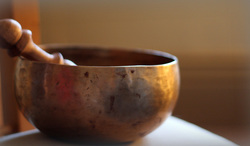 Sound Healing is an effective and proven modality that uses vibrational sound to help reduce stress, alter consciousness and create a deep sense of peace, well being and better health. During our waking state, the normal frequency of our brain waves is that of Beta. Sound tools entrain the brain to move into the deeper Alpha and Theta brain wave frequencies. These are the frequencies that induce deep meditative and peaceful states, clarity of mind and intuition. Modern medicine can now measure and thus confirm the practice of sound as a means to promote healing. Thus, sound is a type of energy medicine that creates the sacred space in which people can heal from stress disorders, pain, depression, the emotional roller coaster and more. Ancient instruments, including Tibetan singing bowls are 'struck and sung' in specific rhythmic patterns to create vibrational sound harmonics at the frequency of "AUM" or "OM". This sound frequency known as that of Perfection impacts the sympathetic nervous system as your brain waves synchronize to the vibrations of the bowls. The harmonic vibrations engage the relaxation reflex and slow down the respiratory, brain and heart rate and disrupt the pain reflex creating a deep sense of well being. Some work with gongs, toning, color and visualizations may be integrated into your session to help move energy. The role of 'intention' in healing is a strong one. When combined with sound, intention, in the form of mantras, prayer or affirmation can greatly increase the vibrations and thus effect the healing. Among the many benefits are relief from pain, stress- related conditions and the ability to alter ones consciousness. It is an integral part of healing the effects of chemotherapy, reduces pain and discomfort from fibromyalgia, chronic fatigue syndrome and depression, After sessions people experience improved memory, clarity, vitality and the ability to take action. Many report out of body experiences, a deep sense of tranquility, sleep soundly and feel the effects of the treatment for several days. What does the sound from the bowls actually do? It puts your physical, emotional, and spiritual energies back into alignment. When these energies are aligned, the needed energy balancing or chakra balancing creates the perfect container for healing. Ancient singing bowls come from different areas in the Himalayan mountain range, such as Tibet, Bhutan and Nepal. Although their exact age is not known, many of them have been dated back hundreds of years. Made out of a consecrated 7 metal alloy prayers and mantras were chanted to them during the process of their creation. So, these bowls have the sacred energy of the prayers imbued in them. Additionally, the old bowls were made with the intention of healing or transforming consciousness. Another important aspect of the Himalayan bowls is that they work on a fundamental level. That is, their vibrations work on all levels (spiritual, physical and emotional) so they treat the whole being rather than just one energy center or part of the body. Many people report that in additon to pain relief and they come off of the emotial roller coaster and feel a deeper sense of happiness and wellbeing. The crystal bowls are made by pulverizing crystals found in the earth. Each bowl is fashioned to be in sync with one specific area of the body. In this way they can be useful when addressing a particular area or condition in the body and can work well when combined with Tibetan bowls. How do the vibrations from the singing bowls help in the healing process? It is my belief that all disease is, at its core, a mis-alignment of energies. I also believe that our cells, muscles and organs store blocked energy from past and present mis-alignment and this manifests as dis-ease or disease. There is only so much one can do by thinking and talking. Energetic work such as vibrational sound that directly accesses the cellular memory is needed to release blocked energy and bring the body back into alignment. In a sense it creates the conditions in which healing can take place and in doing so speeds up the process. Sessions last approximately an hour and take place fully clothed on a mat on the floor. Bowls can be placed and played all around your body, head and on your charkras(energy centers). When taking place in a group the bowls will be at the front of the room. Please wear comfortable clothing without buttons, zippers or jewelry. Our next meditation will be Thursday May 15th 5:30-7 pm. Doors open at 5pm. Namaste  ~Saute garlic, leeks, scallions, peppers, mushrooms to hot oil, season with any fresh herbs you are using today. ~Add the rest of vegetables. Adding the leafy greens 1st and letting them simmer down is helpful. ~Add any vegetable water (if you've chopped the night before and stored vegetables in water), mushrooms and mushroom water to the broth. ~Cook for 10-15 minutes. Salt to taste. Enjoy! 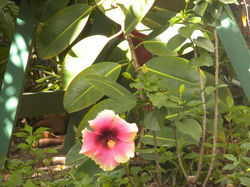 Make your own Deodorant... 1/4 c. Coconut Oil softened 2-3 Tbsp. Baking Soda 2 Tbsp. Arrowroot Powder 4 drops of your favorite essential oil ( I use Lavender) If you have a tendency to break out add a 1/2 tsp. of Witch Hazel Mix and let sit... it will harden, you don't need much so this recipe will probably last you a year. All ingredients can be found at Whole Foods, Vitamin Cottage or a natural health food store. This deodorant really works! 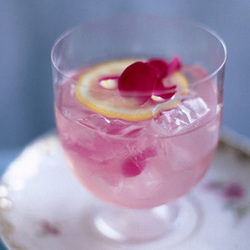 If you were going to try one new recipe to keep your cool this summer, try rosewater lemonade. The heat of summer can provoke anger and irritability, especially when a person is dehydrated from sweating, spending long hours under the summer sun or up late at night socializing. Altogether, these strains on your body may make it all too tempting to fight with your loved ones. Fortunately, you can recover your composure and find relief with cooling, refreshing beverages like rosewater lemonade. When the thermometer seems relentless, the key to a kinder personality lies in the understanding that summer is a firey season of aggravated Pitta. When provoked, Pitta generally reacts with irritability, resistance, and aggression. Pitta people have a basic need for sweetness and beauty. When overheated, Pitta needs a gentle yes to calm them into a more amiable easiness. They respond best to cooling, calming balms like sitting under the moon, in the shade of a tree, and sweet foods with a pleasant aroma. Rosewater Lemonade brings sweetness and beauty into the day, calming their agitated mind. The mere smell of a rose cools their anger and criticism. Knowing this about Pitta helps you to please and nurture yourself or a loved one, rather than provoke them. Rosewater relieves and cools inflammation. It's great for spraying on your sunburned skin or summer rashes, but it also heals and soothes internal tissues as well. It has a mild astringency that tones tissues, including the digestive tract. Lemons cool the skin because they help you sweat. Lemons cleanse the blood of impurities, aid digestion and quench thirst. Although lemons are heating in the digestive tract, they are a cooling astringent in the blood. Sour taste focuses a scattered mind and helps nudge your thoughts from the head back to the heart, the seat of kindness. For an even more Pitta cooling effect, add lime instead of lemon and maple syrup instead of raw sugar. Kapha may prefer honey. A wonderful, refreshing substitute for iced tea. It is inspired by a Tunisian drink with lemons and orange blossom water. Rosewater is the water leftover from the production of rose essential oil. It has an uplifting rose fragrance. As Ayurveda students, we sprayed ourselves with rosewater mist on hot days to keep cool. Rosewater is available in most Indian and Middle Eastern grocery stores. Ingredients 1/8 whole Lemon 1 tsp. Raw Sugar 1/8 tsp. Rose Water 2 c Water Recipe from www.joyfulbelly.com  Definition Ayurvedic medicine is a system of healing that originated in ancient India. In Sanskrit, ayur means life or living, and veda means knowledge, so Ayurveda has been defined as the "knowledge of living" or the "science of longevity." Ayurvedic medicine utilizes diet, detoxification and purification techniques, herbal and mineral remedies, yoga, breathing exercises, meditation, and massage therapy as holistic healing methods. Ayurvedic medicine is widely practiced in modern India and has been steadily gaining followers in the West. Purpose According to the original texts, the goal of Ayurveda is prevention as well as promotion of the body's own capacity for maintenance and balance. Ayurvedic treatment is non-invasive and non-toxic, so it can be used safely as an alternative therapy or along-side conventional therapies. Ayurvedic physicians claim that their methods can also help stress-related, metabolic, and chronic conditions. Ayurveda has been used to treat acne, allergies, asthma, anxiety, arthritis, chronic fatigue syndrome, colds, colitis, constipation, depression, diabetes, flu, heart disease, hypertension, immune problems, inflammation, insomnia, nervous disorders, obesity, skin problems, and ulcers. Ayurvedic physicians seek to discover the roots of a disease before it gets so advanced that more radical treatments are necessary. Thus, Ayurveda seems to be limited in treating severely advanced conditions, traumatic injuries, acute pain, and conditions and injuries requiring invasive surgery. Ayurvedic techniques have also been used alongside chemotherapy and surgery to assist patients in recovery and healing. Description Origins Ayurvedic medicine originated in the early civilizations of India some 3,000-5,000 years ago. It is mentioned in the Vedas, the ancient religious and philosophical texts that are the oldest surviving literature in the world, which makes Ayurvedic medicine the oldest surviving healing system. According to the texts, Ayurveda was conceived by enlightened wise men as a system of living harmoniously and maintaining the body so that mental and spiritual awareness could be possible. Medical historians believe that Ayurvedic ideas were transported from ancient India to China and were instrumental in the development of Chinese medicine. Today, Ayurvedic medicine is used by 80% of the population in India. Aided by the efforts of Deepak Chopra and the Maharishi, it has become an increasingly accepted alternative medical treatment in America during the last two decades. Chopra is an M.D. who has written several bestsellers based on Ayurvedic ideas. He also helped develop the Center for Mind/Body Medicine in La Jolla, California, a major Ayurvedic center that trains physicians in Ayurvedic principles, produces herbal remedies, and conducts research and documentation of its healing techniques. Key ideas To understand Ayurvedic treatment, it is necessary to have an idea how the Ayurvedic system views the body. The basic life force in the body is prana, which is also found in the elements and is similar to the Chinese notion of chi. As Swami Vishnudevananda, a yogi and expert, put it, "Prana is in the air, but is not the oxygen, nor any of its chemical constituents. It is in food, water, and in the sunlight, yet it is not vitamin, heat, or light-rays. Food, water, air, etc., are only the media through which the prana is carried." In Ayurveda, there are five basic elements that contain prana: earth, water, fire, air, and ether. These elements interact and are further organized in the human body as three main categories or basic physiological principles in the body that govern all bodily functions known as the doshas. The three doshas are vata, pitta, and kapha. Each person has a unique blend of the three doshas, known as the person's prakriti, which is why Ayurvedic treatment is always individualized. In Ayurveda, disease is viewed as a state of imbalance in one or more of a person's doshas, and an Ayurvedic physician strives to adjust and balance them, using a variety of techniques. The vata dosha is associated with air and ether, and in the body promotes movement and lightness. Vata people are generally thin and light physically, dry-skinned, and very energetic and mentally restless. When vata is out of balance, there are often nervous problems, hyperactivity, sleeplessness, lower back pains, and headaches. Ayurvedic Body Types Vata Pitta Kapha Pitta is associated with fire and water. In the body, it is responsible for metabolism and digestion. Pitta characteristics are medium-built bodies, fair skin, strong digestion, and good mental concentration. Pitta imbalances show up as anger and aggression and stress-related conditions like gastritis, ulcers, liver problems, and hypertension. The kapha dosha is associated with water and earth. People characterized as kapha are generally large or heavy with more oily complexions. They tend to be slow, calm, and peaceful. Kapha disorders manifest emotionally as greed and possessiveness, and physically as obesity, fatigue, bronchitis, and sinus problems. Diagnosis In Ayurvedic medicine, disease is always seen as an imbalance in the dosha system, so the diagnostic process strives to determine which doshas are underactive or overactive in a body. Diagnosis is often taken over a course of days in order for the Ayurvedic physician to most accurately determine what parts of the body are being affected. To diagnose problems, Ayurvedic physicians often use long questionnaires and interviews to determine a person's dosha patterns and physical and psychological histories. Ayurvedic physicians also intricately observe the pulse, tongue, face, lips, eyes, and fingernails for abnormalities or patterns that they believe can indicate deeper problems in the internal systems. Some Ayurvedic physicians also use laboratory tests to assist in diagnosis. Treatment Ayurvedic treatment seeks to re-establish balance and harmony in the body's systems. Usually the first method of treatment involves some sort of detoxification and cleansing of the body, in the belief that accumulated toxins must be removed before any other methods of treatment will be effective. Methods of detoxification include therapeutic vomiting, laxatives, medicated enemas, fasting, and cleansing of the sinuses. Many Ayurvedic clinics combine all of these cleansing methods into intensive sessions known as panchakarma. Panchakarma can take several days or even weeks and they are more than elimination therapies. They also include herbalized oil massage and herbalized heat treatments. After purification, Ayurvedic physicians use herbal and mineral remedies to balance the body as well. Ayurvedic medicine contains a vast knowledge of the use of herbs for specific health problems. Ayurvedic medicine also emphasizes how people live their lives from day to day, believing that proper lifestyles and routines accentuate balance, rest, diet, and prevention. Ayurveda recommends yoga as a form of exercise to build strength and health, and also advises massage therapy and self-massage as ways of increasing circulation and reducing stress. Yogic breathing techniques and meditation are also part of a healthy Ayurvedic regimen, to reduce stress and improve mental energy. Of all treatments, though, diet is one of the most basic and widely used therapy in the Ayurvedic system. An Ayurvedic diet can be a very well planned and individualized regimen. According to Ayurveda, there are six basic tastes: sweet, sour, salty, pungent, bitter, and astringent. Certain tastes and foods can either calm or aggravate a particular dosha. For instance, sweet, sour, and salty decrease vata problems and increase kapha. Sour, salty, and pungent can increase pitta. After an Ayurvedic physician determines a person's dosha profile, they will recommend a specific diet to correct imbalances and increase health. The Ayurvedic diet emphasizes primarily vegetarian foods of high quality and freshness, tailored to the season and time of day. Cooling foods are eaten in the summer and heating ones in the winter, always within a person's dosha requirements. In daily routine, the heaviest meal of the day should be lunch, and dinner should eaten well before bedtime, to allow for complete digestion. Also, eating meals in a calm manner with proper chewing and state of mind is important, as is combining foods properly and avoiding overeating. Cost Costs of Ayurvedic treatments can vary, with initial consultations running anywhere from $40 to over $100, with follow-up visits costing less. Herbal treatments may cost from $10 to $50 per month, and are often available from health food or bulk herb stores. Some clinics offer panchakarma, the intensive Ayurvedic detoxification treatment, which can include overnight stays for up to several weeks. The prices for these programs can vary significantly, depending on the services and length of stay. Insurance reimbursement may depend on whether the primary physician is a licensed M.D. Preparations Ayurveda is a mind/body system of health that contains some ideas foreign to the Western scientific model. Those people considering Ayurveda should approach it with an open mind and willingness to experiment. Also, because Ayurveda is a whole-body system of healing and health, patience and discipline are helpful, as some conditions and diseases are believed to be brought on by years of bad health habits and require time and effort to correct. Finally, the Ayurvedic philosophy believes that each person has the ability to heal themselves, so those considering Ayurveda should be prepared to bring responsibility and participation into the treatment. Precautions An Ayurvedic practitioner should always be consulted. Side effects During Ayurvedic detoxification programs, some people report fatigue, muscle soreness, and general sickness. Also, as Ayurveda seeks to release mental stresses and psychological problems from the patient, some people can experience mental disturbances and depression during treatment, and psychological counseling may be part of a sound program. Research and general acceptance Because Ayurveda had been outside the Western scientific system for years, research in the United States is new. Another difficulty in documentation arises because Ayurvedic treatment is very individualized; two people with the same disease but different dosha patterns might be treated differently. Much more scientific research has been conducted over the past several decades in India. Much research in the United States is being supported by the Maharishi Ayur-Ved organization, which studies the Ayurvedic products it sells and its clinical practices. Some Ayurvedic herbal mixtures have been proven to have high antioxidant properties, much stronger than vitamins A, C, and E, and some have also been shown in laboratory tests to reduce or eliminate tumors in mice and to inhibit cancer growth in human lung tumor cells. In a 1987 study at MIT, an Ayurvedic herbal remedy was shown to significantly reduce colon cancer in rats. Another study was performed in the Netherlands with Maharishi Ayur-Ved products. A group of patients with chronic illnesses, including asthma, chronic bronchitis, hypertension, eczema, psoriasis, constipation, rheumatoid arthritis, headaches, and non-insulin dependent diabetes mellitus, were given Ayurvedic treatment. Strong results were observed, with nearly 80% of the patients improving and some chronic conditions being completely cured. Other studies have shown that Ayurvedic therapies can significantly lower cholesterol and blood pressure in stress-related problems. Diabetes, acne, and allergies have also been successfully treated with Ayurvedic remedies. Ayurvedic products have been shown to increase short-term memory and reduce headaches. Also, Ayurvedic remedies have been used successfully to support the healing process of patients undergoing chemotherapy, as these remedies have been demonstrated to increase immune system activity. If you would like to learn more about Ayurveda you can check out this fun site http://www.joyfulbelly.com 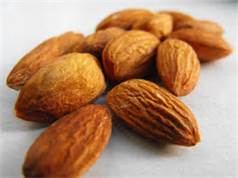 Ojas (pronounced oh-jus) is a Sanskrit word which literally means "vigor" or "life sap". According to the principles of Ayurveda, it is the essential energy of the body which can be equated with the "fluid of life". Those who practice Ayurveda say that Ojas is the sap of one's life energy which, when sufficient, is equated with immunity and a cheerful mind and soul that is enlightened with happiness, when deficient, results in weakness, fatigue and ultimately disease. Ojas is the ultimate refined result of digestion, metabolism, absorption and assimilation. The substance that connects the mind to the body and consciousness, it is a wholesome biochemical substance that nourishes all body tissues and has a direct influence on the nature and quality of physical, mental and emotional life. Ojas' primary location is the heart, from where it circulates to and pervades the entire body. Ojas is collected from the body's seven tissues - plasma, blood, muscle, adipose tissue (fat), bone, bone marrow, and reproductive tissue (semen and ovum) - by the influence of enzymes (Agnis), similar to how a bee collects honey from the essence of many flowers. The purest substance in the universe and omnipresent in the human being, ojas is responsible for higher states of consciousness, purity of thoughts, perfect health, positivity in feelings, love, joy, better immunity, longevity, intelligence, creativity, memory, bliss, and thought process. When an individual's inner consciousness awakens spontaneously, ojas increases. In a nutshell, ojas is the sap of the entire physiology and sustains the life of an individual. Why does Ojas deplete ? All the factors that cause the depletion of Ojas are excessive sex, abuse of drugs and alcohol, sedentary life style, loose talking, loud music, insufficient rest, worries, anxiety, unsatisfied desires, jealousy, lust for worldly comforts, fear, cheerlessness, excessive sleeping, daytime sleeping, lack of exercise, over confidence, over eating, desire to rule over others. In short all the things, which disturb the daily life style of a person, may lead to the depletion of Ojas. Along with eating a balancing diet, one can increase ojas in a variety of ways. General guidelines are to love yourself and others, live a healthy lifestyle, and always take time to appreciate the joys in life. Other ways to increase ojas include: Laugh and smile a lot Take time to relax Make the time before bedtime quiet and non-stimulating Sensory control, TV, internet etc. Meditate regularly Spend time in nature Exercise your creativity Offer your gifts to others Follow your hearts passion Engage in physical activity Worship of the Divine Ojas building foods; milk, almonds, dates or raisins, ghee, acia berries, kale, saffron, raw ginger, berries, pomagranate, nuts. Here is a drink to build your Ojas... OJAS DRINK Use whole milk. Almond or coconut milk are an option if you have sensitivity to dairy. Boil 1 cup of whole milk with 3 dates and 10 peppercorns. Boil and cool three times and then remove the peppercorns. Place milk and dates in the blender and add: 2T oil (ghee, olive oil, sesame oil, or coconut oil), 1 pinch of cinnamon, cumin and cardamom. Add 1 teaspoon of maple syrup or honey and 10 large nuts or seeds. Blend well, drink on and empty stomach and don't eat for 2 hours after you drink. Also drink 2 hours before you eat a meal. OM Shanti 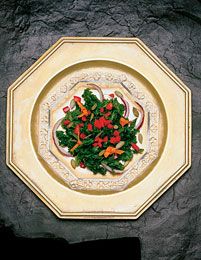
DIRECTIONS The magic of this recipe is that the mushrooms rehydrate with the marvelous taste of the marinade. If you do not have time to prepare the dehydrated mushrooms and nuts, plain mushrooms and nuts will work too. In a large salad serving bowl, combine kale, onions, red pepper, sweet potato, garlic, ginger, lemon juice, oil, Namu Shoyu, and dehydrated mushrooms. Toss. Let the salad sit at room temperature for 1-2 hours. Toss again just before serving and top with nuts or seeds. Note: To blanch kale, tear into bite size pieces, removing stems. Place the leaves in a sieve, and pour 2-3 cups of water that has been brought to a boil and cooled for 1 minute over the kale. Drain. To speed up the draining process, roll up the kale in a clean dishtowel for a few minutes. Serves 5-6. Here are some simple ways to simplify your spirituality by Caroline Myss... |
Details
Sivakami...My spiritual name is Sivakami, which means... one who desires transformation and one who transforms desires. I live in Rifle, Colorado where I teach yoga, create art and love life. I would love to hear your comments. Archives
April 2020
Categories
All
|
 RSS Feed
RSS Feed
